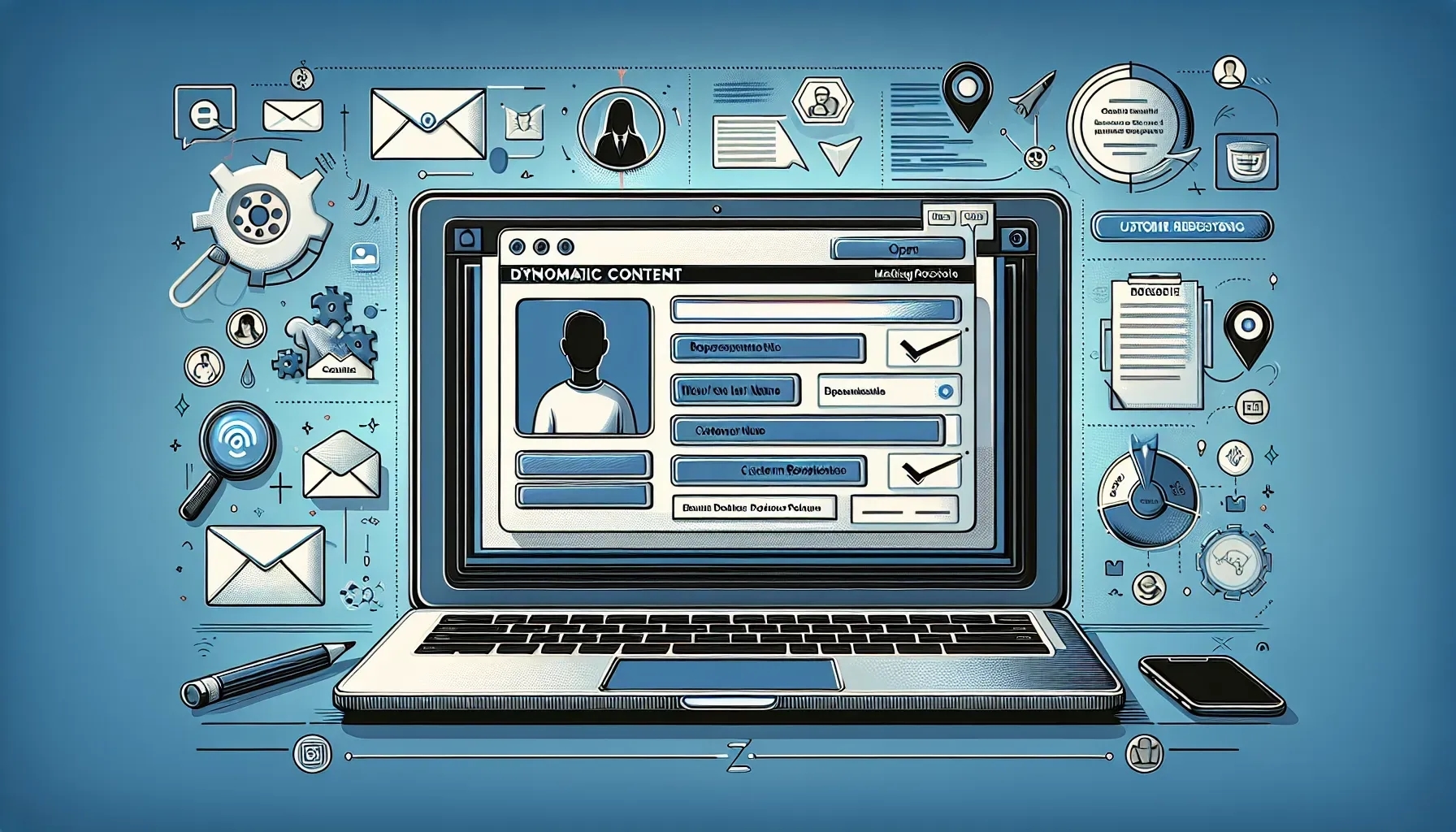What Are Effective Approaches to Personalization in Email Marketing Campaigns?
Marketer Focus

What Are Effective Approaches to Personalization in Email Marketing Campaigns?
In the crowded inbox of today's digital world, personalizing your email marketing can be the key to standing out. We've gathered insights from eight experts, including Digital Marketers and Creative Directors, on how they personalize campaigns to boost engagement. From leveraging customer data for tailored content to segmenting job-search preferences for candidate emails, these professionals share their successful strategies.
- Leverage Customer Data for Tailored Content
- Boost Engagement with Personalized Video Content
- Craft Emails Based on Prospect's Job Role
- Trigger Emails Based on Subscriber Behavior
- Segment Audiences for Targeted Product Recommendations
- Segment Financial Content for Specific Audiences
- Establish Emotional Rapport
- Segment Job-Search Preferences for Candidate Emails
Leverage Customer Data for Tailored Content
I usually take a data-driven approach by leveraging information like our customers' purchase history, browsing behavior, and preferences to craft highly relevant and tailored content. For example, I recently launched a personalized email campaign for a client, targeting his customers who had abandoned their shopping carts. By using their browsing data to recommend complementary products and offering a special discount, my client was able to achieve a 25% increase in click-through rates and a 15% boost in revenue compared to our standard cart abandonment emails. I have come to realize that personalization also allows us to deliver a more meaningful experience that aligns with each individual customer, ultimately driving stronger results for our business.

Boost Engagement with Personalized Video Content
Personalization in email marketing is all about making the recipient feel like the message was crafted specifically for them. We approach this by integrating personalized video content, which has proven to significantly boost engagement. For example, in a recent campaign for a fitness brand, we created individualized workout recommendation videos. Each video started with a personalized greeting using the recipient's name and referenced their specific fitness goals based on the data they provided during signup. This approach resulted in a 40% increase in click-through rates and a 25% boost in overall engagement compared to our standard email campaigns.

Craft Emails Based on Prospect's Job Role
If you want to get results with outreach emails, you must understand your prospect's pain points and offer a solution. Just mentioning their name and using some humor is not enough. Now, my email templates are very different based on the prospect's job role.
For example, if I'm reaching out to the Marketing and Content Manager, I propose topics they haven't already covered in their blog and how their competitors are getting traffic from them. When I contact SEO Managers, I offer a link exchange or to optimize their old articles.
My response rate went from 0 to 10% because now I'm offering real value, and I show my prospects I know what they need.
It takes more time to craft emails like this, but you must always focus on quality, not quantity. There's no point in sending 100 generic emails daily with no response!

Trigger Emails Based on Subscriber Behavior
A key strategy that I use to increase engagement with my audience relies on behavioral triggers and automated workflows. Behavioral triggers send targeted emails based on specific actions taken by subscribers, such as browsing a particular product, abandoning a cart, or signing up for a newsletter.
One specific instance where personalization significantly increased engagement involved a re-engagement campaign for inactive subscribers. I segmented the inactive subscribers based on their past interactions and preferences. Using personalization tokens, I addressed each recipient by name and referred to their previously viewed products or interests. The email offered a special discount on products they had shown interest in; this strategy led to additional purchases made by "dormant" subscribers.

Segment Audiences for Targeted Product Recommendations
When personalization is incorporated into email marketing campaigns, it improves the way target audiences are engaged. At Naxisweb, we heavily focus on adjusting content based on user behavior, demographics, and preferences to increase engagement and conversion rates.
One example where personalized email marketing has massively increased engagement was during our campaign for a popular fashion retailer. We divided subscribers according to their past purchases and browsing history and came up with individualized product recommendations as well as exclusive offers. As a result, we saw our open rates rise by 30%, while click-through rates went up by 20% compared to non-personalized campaigns.
We deployed dynamic content and automatic triggers generated by subscriber interactions that allowed us to send timely and appropriate messages, thereby deepening our relationship with the audience. The strategy also enhanced both campaign performance metrics and brand loyalty, plus customer satisfaction.
If you want more insights or specific examples from our experience at Naxisweb, just let me know. I look forward to the possibility of contributing something to your article.
Segment Financial Content for Specific Audiences
At My Millennial Guide, we approach email marketing personalization by segmenting our audience based on their specific financial interests and situations. We collect data through surveys, website behavior, and past interactions to create targeted content that resonates with different groups. For example, we might have separate segments for recent graduates, young professionals, and those approaching their 30s, each with unique financial concerns.
One specific instance where this approach significantly increased engagement was when we launched a series of emails tailored to recent graduates struggling with student loan debt. We personalized the content to address common questions and concerns for this group, such as loan consolidation options and strategies for balancing loan payments with other financial goals. This campaign saw a 40% higher open rate and a 25% higher click-through rate compared to our general newsletters.
The personalized approach made the content more relevant and actionable for this specific audience, leading to increased engagement and positive feedback from subscribers who felt we were directly addressing their needs.

Establish Emotional Rapport
What is “real” personalization? This one simple example is all you need to know.
Tons of people believe that using a person's first name is personalization.
"Hello, Lou,"
However, that's not real personalization. TRUE personalization is inducing individual feelings of self-awareness. It revolves around forming a bond on a personal level. Simply utilizing a first name doesn't invoke deep feelings.
Authentic personalization makes individuals experience:
- Joy
- Humor
- Gratitude
- Challenge
- Recognition
This is how you build trust. Imagine this:
Let's pretend you market products to fashion influencers. Merely stating "Hi, Taylor" is not personalizing. But expressing "Taylor, your taste is impeccable." makes them feel acknowledged.
Can you spot the difference? One is a mere name. The other establishes an emotional rapport with an individual.
The trick lies in grasping your ICP’s dreams and challenges. Then directly address their emotions via emails. Make them feel valued and comprehended.
That is what genuine email personalization is. It isn't about names, but emotional bonds. And that's the method to foster genuine trust and loyalty among customers.
Segment Job-Search Preferences for Candidate Emails
For me, personalization in email marketing starts with segmenting our audience based on their job-search preferences. At our recruitment agency, we noticed that candidates looking for tech roles responded better to emails highlighting industry trends and job openings in their field.
One specific instance stands out. We sent a personalized email to a segment of software developers, featuring a blog post on the latest programming languages and a list of open positions requiring those skills. The engagement rate for this email was significantly higher, with a 40% increase in click-through rates compared to our generic emails.
Ultimately, this approach not only boosted engagement but also helped us build stronger relationships with our candidates, showing them that we understand their interests and career goals.